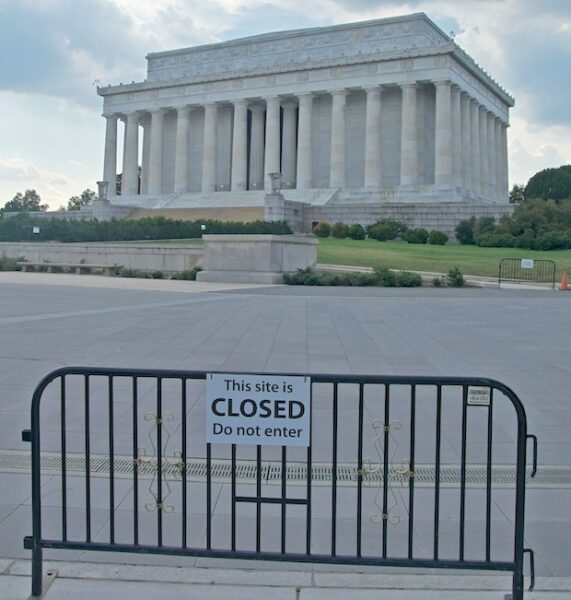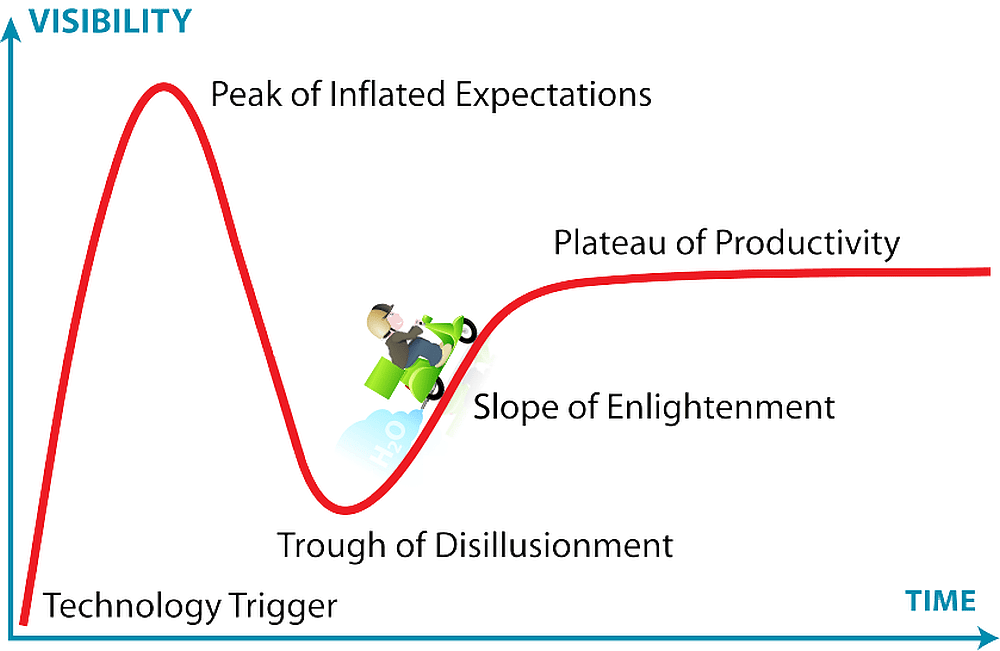

The Lincoln Memorial, along with other national monuments and parks, is closed during the United States federal government shutdown of 2013. Credit: reivax/Wikimedia Commons
If you’ve ever visited the Forbes website, you’ve probably seen the “Thought of the Day.” On Wednesday the site, one of the first stops for research on this post, happened to feature a quote attributed to J.J. Chenier:
“Good sense is at the bottom of everything: virtue, genius, wit, talent, and taste.”
Oh, the irony. Seemingly nothing, save possibly some good, nonpartisan leadership, is more lacking in Washington these days than good sense.
As the federal government shutdown drags through its second week, not much seems to have changed in terms of the entrenched political positions of the Obama administration, House Republicans, and Senate Democrats. The inability of the parties to pass a continuing resolution to keep the government running originally stemmed from House Republican demands that passage be tied to funding—or, more accurately, defunding—of the Affordable Care Act. But things are about to become even more muddled, as the US government will reach its debt ceiling in the next few days and the possibility of a government default looms. The debt ceiling fight, added to the ACA funding/defunding battle, may make a resolution even less likely or may force lawmakers to act on at least a stopgap solution to the budget stalemate.
According to a US Treasury Department report (pdf), “a default would be unprecedented and has the potential to be catastrophic: credit markets could freeze, the value of the dollar could plummet, U.S. interest rates could skyrocket, the negative spillovers could reverberate around the world, and there might be a financial crisis and recession that could echo the events of 2008 or worse.”
Treasury’s doomsday scenario may or may not come to pass (let’s hope not!), but the shutdown is already seriously impacting government agencies that fund materials science research and labs that perform that research. “The entire scientific community will suffer if the shutdown is allowed to endure for any substantial length of time,” Science editor-in-chief Marcia McNutt wrote in an editorial last week. “University and industry laboratories cannot take up the slack: The research portfolios of the science mission agencies have been tuned in such a way that they do not compete with or duplicate the work done in nongovernment facilities.” McNutt notes that rules regarding a government shutdown prevent most scientists from working even on a volunteer basis.
The shutdown is also impacting attendance of federal employees at scientific meetings, according to another Science report. As the materials science community gears up for MS&T’13 at the end of this month, many government scientists are telling ACerS colleagues that their planned attendance is now in question.
As of Friday morning, there’s a glimmer of hope that a temporary end to the debt limit problem is in sight. Members of both parties have floated the possibility of a short-term increase in the limit to allow time for broader negotiations on the budget. The two sides met Thursday evening for 90 minutes and at least agreed to continue talking about ways to avoid default, according to this CBS News report. But in the meantime the shutdown continues.
Whether the talk from pols on both sides of the aisle of a negotiated end to the stalemate is substantive or just more political posturing remains to be seen. But, in another bit of irony, there’s a very good chance the shutdown, however long it winds up lasting, will in the end save no money. The House voted unanimously last weekend to pay the approximately 800,000 furloughed employees for their time off. But the Senate has yet to act on the measure, and according to this Defense One article some Senators believe voting to approve back pay now would remove an incentive to end the shutdown.
Stay tuned for more coverage as developments warrant.
Author
Jim Destfani
CTT Categories
- Market Insights

